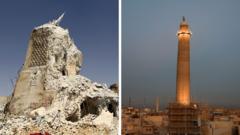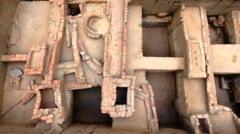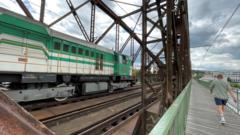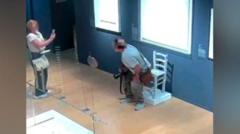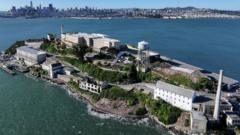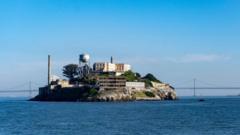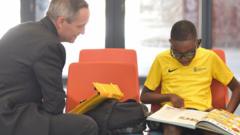In a significant development, Mosul's historic sites are reopening after years of destruction wrought by the extremist Islamic State (IS) group. The initiative, funded by Unesco, kicked off a year after IS was expelled from the city in 2017, marking a hopeful resurgence in the wake of destruction.
A ceremony to celebrate the revival is slated for Wednesday, featuring attendance by Unesco's director-general Audrey Azoulay, local artisans, and leaders from diverse religious communities in Mosul, a city once symbolizing coexistence among different cultures.
Mosul fell under IS's control in 2014, leading to violent repercussions for its religious minority populations. A coalition including the Iraqi army eventually dislodged IS from the city through intense military operations, particularly centered around the Old City's historic areas. During this conflict, IS obliterated several key landmarks, most infamously detonating explosives within the revered al-Nuri mosque in a last-ditch attempt to erase the region's cultural heritage.
Photographer Ali al-Baroodi, present post-liberation, described a grim reality reflecting the city's transformation. "It was a ghost town," he remarked, reflecting on the destruction surrounding the iconic Hadba minaret. Over 80% of the Old City was left in ruins, alongside the need to mend the community’s fractured spirit.
The reconstruction project carried a price tag of about $115 million, funded primarily by the United Arab Emirates and the European Union. Father Olivier Poquillon, a Dominican priest engaged in the revival of the Notre-Dame de l’Heure convent, noted the importance of fostering trust among diverse community members for successful rebuilding.
Leading the restoration efforts, Maria Rita Acetoso emphasizes the dual benefits of cultural projects—job creation and skill development—as well as the restoration of cultural identity. Since the beginning of the project, over 1,300 youths have been trained in traditional crafts, generating around 6,000 jobs.
As life gradually returns to the rebuilt structures, community members express hope. Mustafa, whose family residence dates back to 1864, shared his joy at witnessing the restoration of his family home after it was damaged during the liberation. Another resident, Abdullah, echoed similar sentiments, recalling the emotional weight of returning to his historically significant home.
Although remnants of pain linger in Mosul, the restoration of its cherished landmarks serves as a beacon of hope. Ali al-Baroodi articulated the significance of this transformation, likening it to the revival of a once-lost soul, embodying the resilient spirit of Mosul as it emerges from the shadows of conflict.
A ceremony to celebrate the revival is slated for Wednesday, featuring attendance by Unesco's director-general Audrey Azoulay, local artisans, and leaders from diverse religious communities in Mosul, a city once symbolizing coexistence among different cultures.
Mosul fell under IS's control in 2014, leading to violent repercussions for its religious minority populations. A coalition including the Iraqi army eventually dislodged IS from the city through intense military operations, particularly centered around the Old City's historic areas. During this conflict, IS obliterated several key landmarks, most infamously detonating explosives within the revered al-Nuri mosque in a last-ditch attempt to erase the region's cultural heritage.
Photographer Ali al-Baroodi, present post-liberation, described a grim reality reflecting the city's transformation. "It was a ghost town," he remarked, reflecting on the destruction surrounding the iconic Hadba minaret. Over 80% of the Old City was left in ruins, alongside the need to mend the community’s fractured spirit.
The reconstruction project carried a price tag of about $115 million, funded primarily by the United Arab Emirates and the European Union. Father Olivier Poquillon, a Dominican priest engaged in the revival of the Notre-Dame de l’Heure convent, noted the importance of fostering trust among diverse community members for successful rebuilding.
Leading the restoration efforts, Maria Rita Acetoso emphasizes the dual benefits of cultural projects—job creation and skill development—as well as the restoration of cultural identity. Since the beginning of the project, over 1,300 youths have been trained in traditional crafts, generating around 6,000 jobs.
As life gradually returns to the rebuilt structures, community members express hope. Mustafa, whose family residence dates back to 1864, shared his joy at witnessing the restoration of his family home after it was damaged during the liberation. Another resident, Abdullah, echoed similar sentiments, recalling the emotional weight of returning to his historically significant home.
Although remnants of pain linger in Mosul, the restoration of its cherished landmarks serves as a beacon of hope. Ali al-Baroodi articulated the significance of this transformation, likening it to the revival of a once-lost soul, embodying the resilient spirit of Mosul as it emerges from the shadows of conflict.

